Ningyocho – Delicious Foods Unique To This Historical Area Of Tokyo

Ningyocho in the Chuo district of Tokyo is a historic town that has prospered since the Edo period. We introduce here the charms of Ningyocho, including shops selling traditional sweets, great dining places, and a shrine that protects children!
What Kind of Place Is Ningyocho?
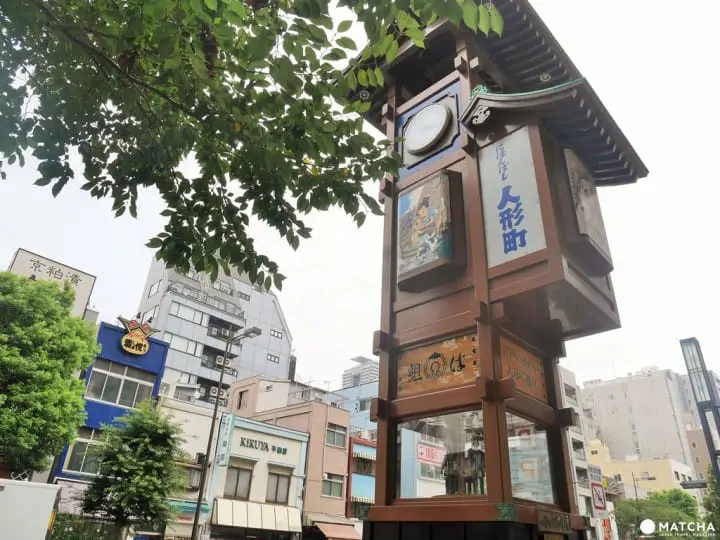
Ningyocho is located in the Chuo ward of Tokyo.
Before the Edo period, this region was a vast wetland but was reclaimed to be used as a convenient location for water transportation and was made into a town. After the peaceful Edo period began, the Ningyocho area developed as a commercial town.
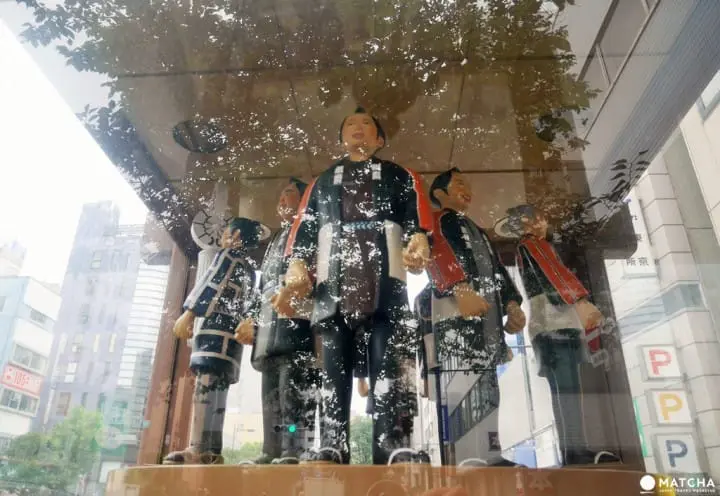
The Yoshiwara Red-Light District, which was an authorized red-light district, was initially located in this area. The brilliant growth of this district was brought about by the recreational spirits of traditional Japanese performances, kabuki theater (classical Japanese drama), and thriving businesses.
The name “Ningyocho” (lit. Doll Town) is said to be derived from the fact that many doll makers that operated the puppets in ningyo joruri (traditional puppet theater) lived in this area.
Filled With Shops With Over 100 Years Of History!
The history of Ningyocho is long and filled with old and well-established shops that still line its streets. We will take a look into the prosperous history of the famous shops of Ningyocho and introduce them in this article.
Tamahide: A Longstanding Chicken Sukiyaki Restaurant

Tamahide, a restaurant established in 1760 that specializes in Shamo chicken, is the oldest restaurant in Japan as well as the most famous Shamo chicken specialty restaurant.
Its founder Tetsuemon Yamada was a falconer that was a supplier to the Tokugawa shoguns (the warrior family who ruled Japan during the Edo Period). He was highly skilled in cutting the bodies and bones of birds without showing blood and would slice into the meat without touching it with his hands.
At the time of its establishment, the restaurant went by the name Tamatetsu which was derived from Tetsuemon’s own name. However, its name changed several times after until it acquired the name Tamahide. Tama is the name of Tetsuemon’s wife.
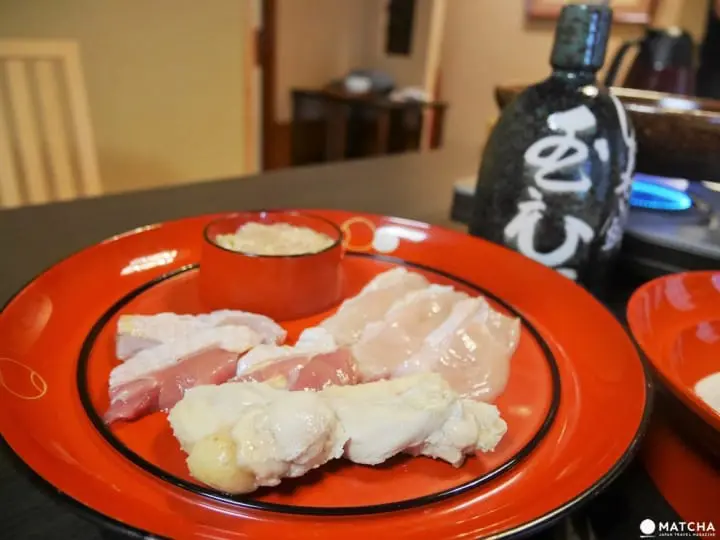
Shamo chicken is typically gamecock and is a high-grade ingredient that is three to four times the price of normal chicken in Japan.
This shop takes great pride in its ingredients, and as such, a brand of Shamo chicken called Tokyo Shamo is produced and used at Tamahide. Visitors from all over Japan who have been charmed by the firm texture and rich flavor of the chicken love their cuisine wholeheartedly.
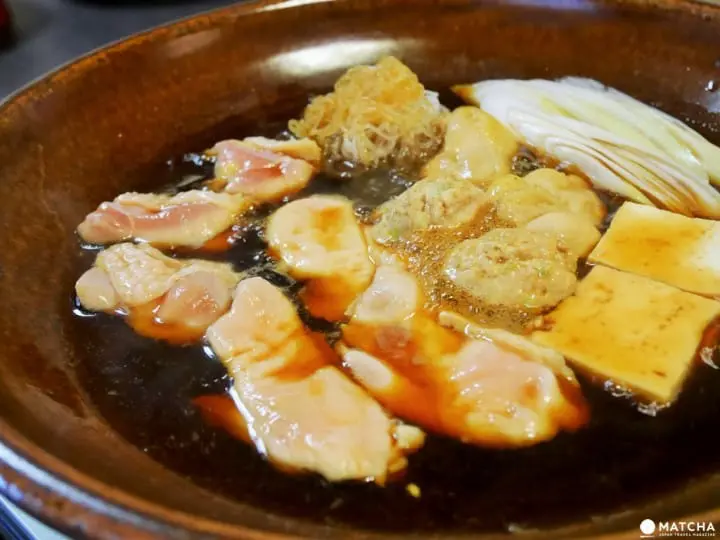
The eighth-generation owner Mr. Konosuke Yamada told us that chicken sukiyaki is what comes to mind when speaking of Tamahide’s signature dishes.
It is said that the prototype of the popular Japanese cuisine sukiyaki (meat that is slowly simmered in an iron pot) using beef is actually chicken sukiyaki. Currently, there are only ten restaurants in the entirety of Japan that serve chicken sukiyaki with Tamahide as the pioneer of the dish. Chicken sukiyaki is a local specialty that everyone orders when they visit Tamahide.
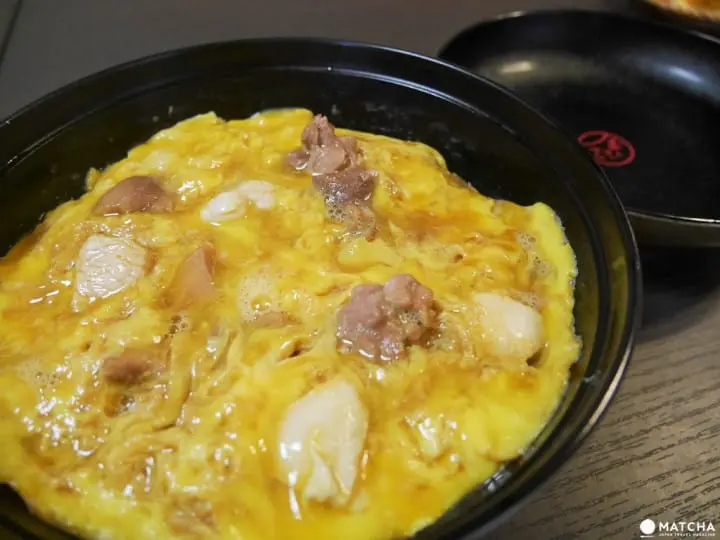
Chicken sukiyaki is shamo chicken simmered in a stock made from mirin (sweet rice wine condiment) and soy sauce served with raw egg. The flavor of the firm meat of the shamo chicken together with the richness of egg is exquisite.
Lastly, the remaining ingredients in the pot are mixed together with egg and poured over rice for you. This is well-known by everyone as oyakodon (chicken and egg over rice) and is a recipe that was invented by the fifth-generation proprietress.
Itakuraya: 110 Year Old Creator Of Seven Lucky Gods Ningyo-yaki
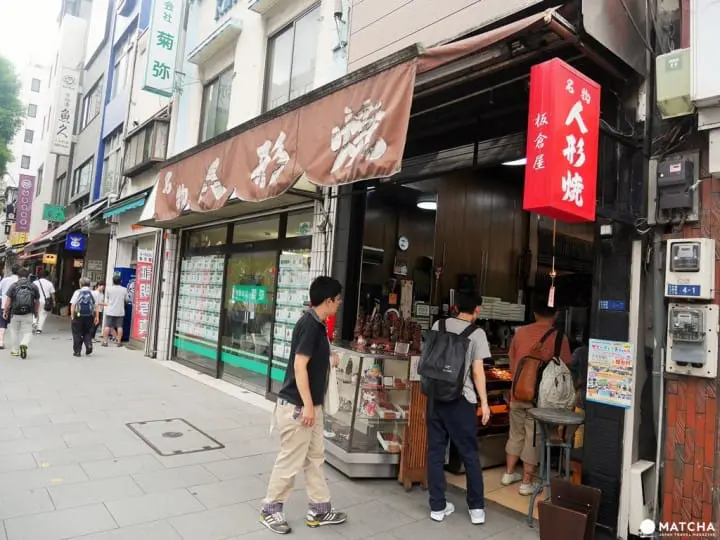
Itakuraya is a small shop run on the corner of Amazake Yokocho. It is a specialty ningyo-yaki (doll cake) shop with a history spanning 110 years since its establishment.
When you hear ningyo-yaki, many are reminded of the ningyo-yaki of Sensoji Temple in Asakusa, right? The origin of ningyo-yaki was actually in Ningyocho and was then spread throughout the country. However, there are currently only three ningyo-yaki shops remaining in Ningyocho.
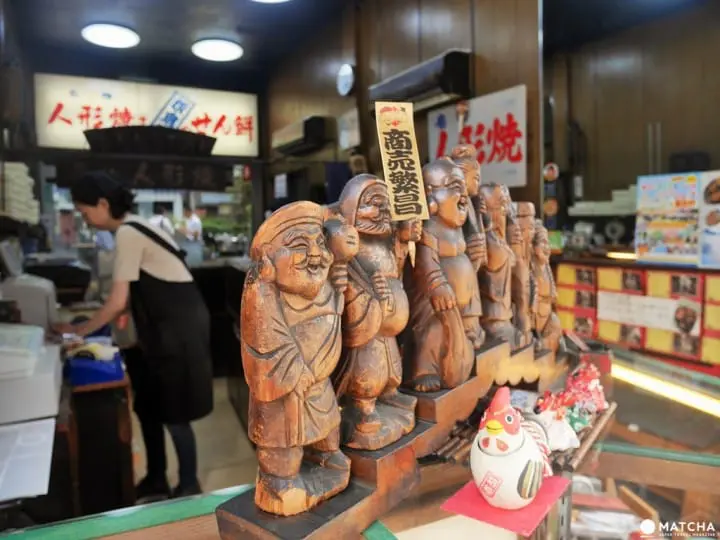
Itakuraya is one of those three shops and was the first to produce Seven Lucky Gods ningyo-yaki. A feature of Ningyocho ningyo-yaki are that they are made in the shapes of the Seven Lucky Gods. Ningyo-yaki from other regions are made in the shapes of doves or lanterns, so it might be interesting to try and compare them.
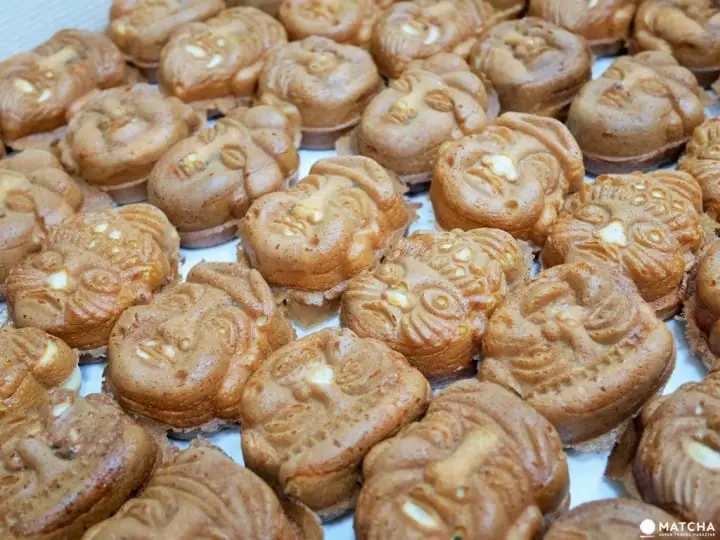
Since its establishment in 1907, Itakuraya’s Seven Lucky Gods ningyo-yaki were made as full-length figures. However, the fifth-generation owner thought, “Let’s make them into smiling Seven Lucky Gods.” Thus, the cakes were converted into their present form of being only of their faces.
When thinking of the Seven Lucky Gods, you think of seven gods. However, there are only six types of faces available in Itakuraya’s ningyo-yaki. The reason behind that is that when the customer’s smiling face is included, it makes seven smiling faces.
Aside from ningyo-yaki filled with anko, there are also senjo-yaki without anko. The origin of this cake comes from the fact that sugar was difficult to obtain during the Russo-Japanese War and only castellas could be made. The shapes of the cakes are themed after tanks and aircraft.
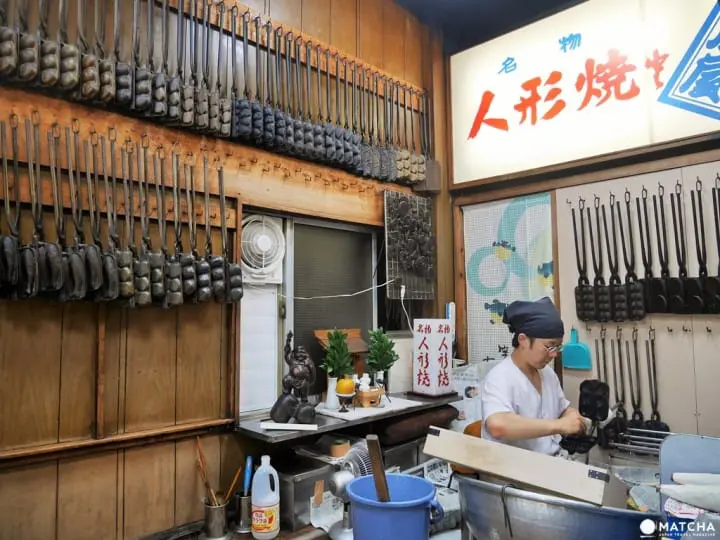
Even today, 110 years since its establishment, Itakuraya’s ningyo-yaki are made individually. Preparations begin at four a.m. every morning and the smiling Seven Lucky Gods are baked with love in the heat of the shop.
Futaba: A 110 Year Old Shop That Combines Tofu And Amazake
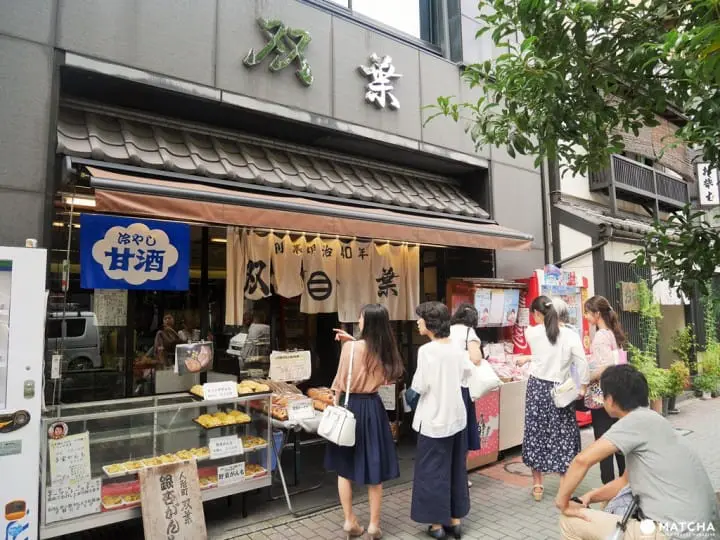
Itakuraya begins making ningyo-yaki at four in the morning, but Futaba, a shop in Amazake Yokocho, begins their preparations at an even earlier time.
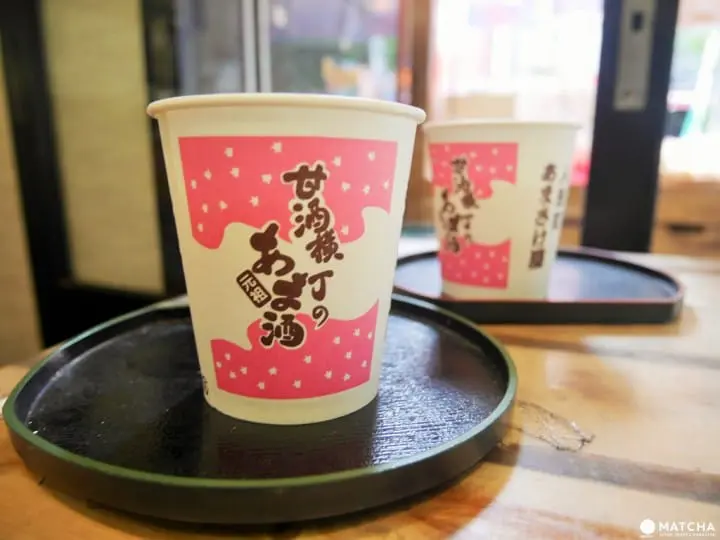
Futaba is a famous and veteran amazake (sweet rice wine) shop established in 1907 in Amazake Yokocho. However, the shop initially started out making tofu.
So why did they begin selling amazake?
The name “Amazake Yokocho” comes from an amazake specialty shop that was once located in this alley. After the shop closed, many customers came searching for amazake, so Futaba’s third generation owner thought, “If that’s the case, then let’s sell amazake!”
It then became a well-known amazake shop that represents Amazake Yokocho.
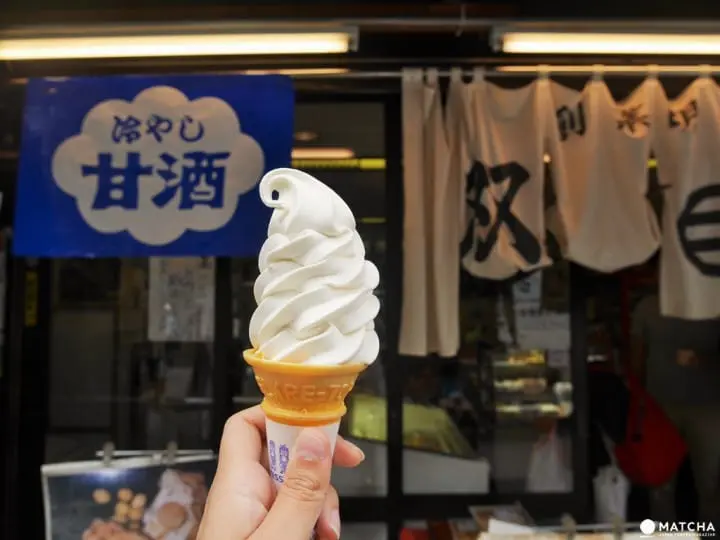
This shop’s amazake is not made in advance - it's made fresh every day. They prepare two types of amazake: hot or iced. With hot amazake, you can fully taste its fragrance and sweetness.
If you are trying amazake in the summer, then we also recommend their Amazake soft serve. It deliciously combines the flavors of soy milk and amazake, so definitely please try it.
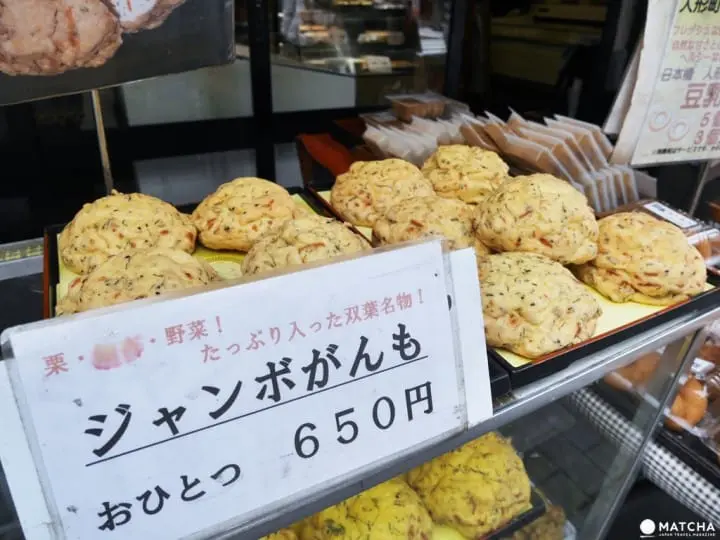
You also can’t miss out on these handmade tofu products!
Extra-large ganmodoki (fried tofu fritters) and soy milk donuts are the most recommended by the shop. Ganmodoki are filled with many ingredients while the soy milk donuts are light in flavor and have a deliciousness that you won’t get tired of. You can also sit and enjoy your food on the bench in front of the shop.
Kissako Kaiseiken: Nearly 100 Years Since Its Establishment
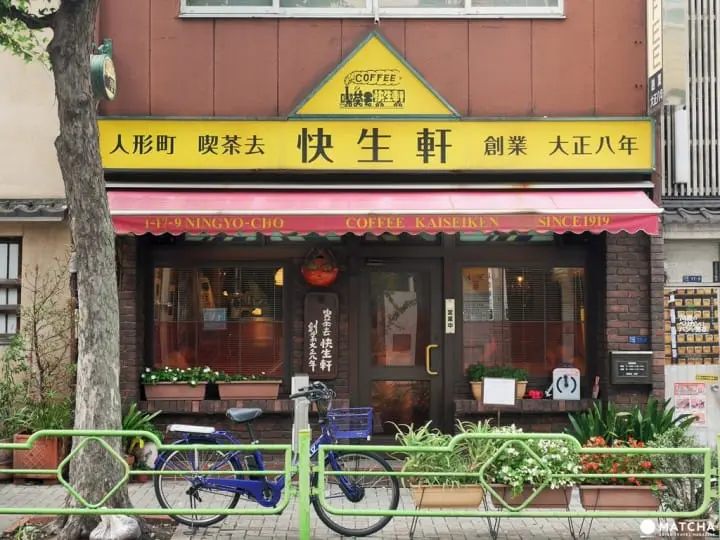
Kissako Kaiseiken is reputedly the best or second best historical coffee shop in Japan, and was established in 1919. Currently the fourth-generation owner manages the shop.
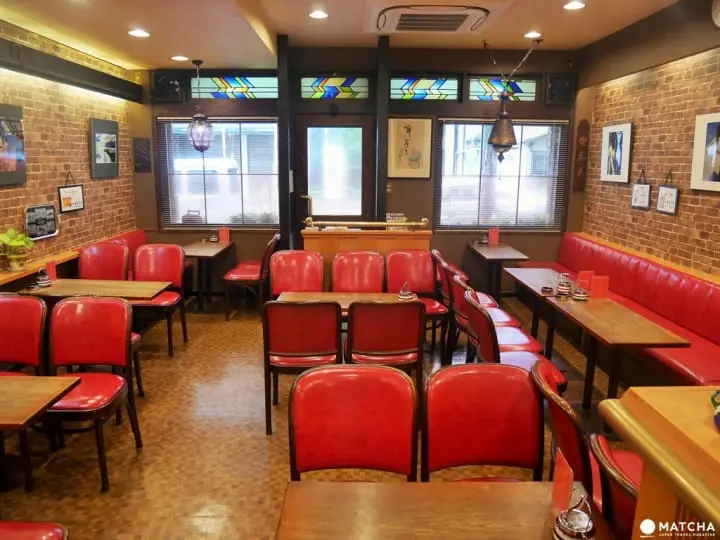
Red leather chairs familiar to coffee shops are beautifully arranged inside. On the counter is where the coffee mill, which has continuously worked without rest for 50 years, sits. It’s almost as if time has stopped as the smell of coffee wafts into the air inside.
The shop was used as an important setting in the popular Japanese drama Shinzanmono (The Newcomer). It has also become a sacred drama spot (settings used in series that are popular travel destinations for fans).
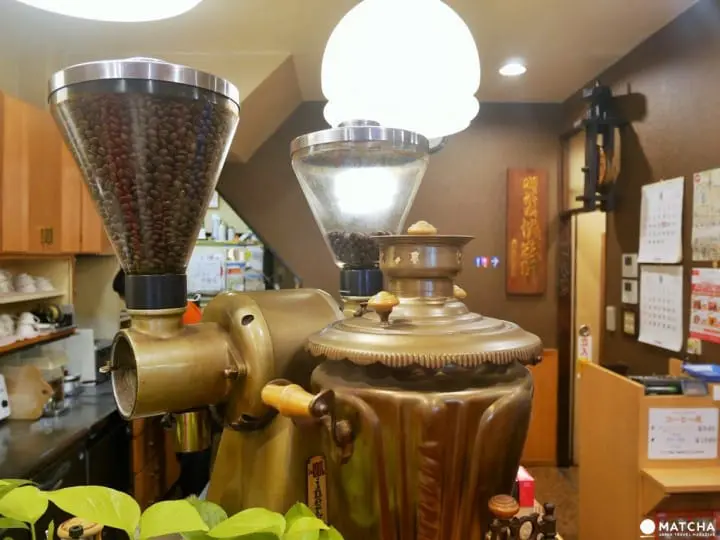
The name Kissako comes from a Buddhist term and is filled with the wishes of its founder for customers that come in to dispel all their idle thoughts by serving them tea and having them experience both flavor and Zen.
Many of the people that pray for safe childbirth at Suitengu Shrine also come here. The word “kaiseiken” means to pray for a safe delivery.
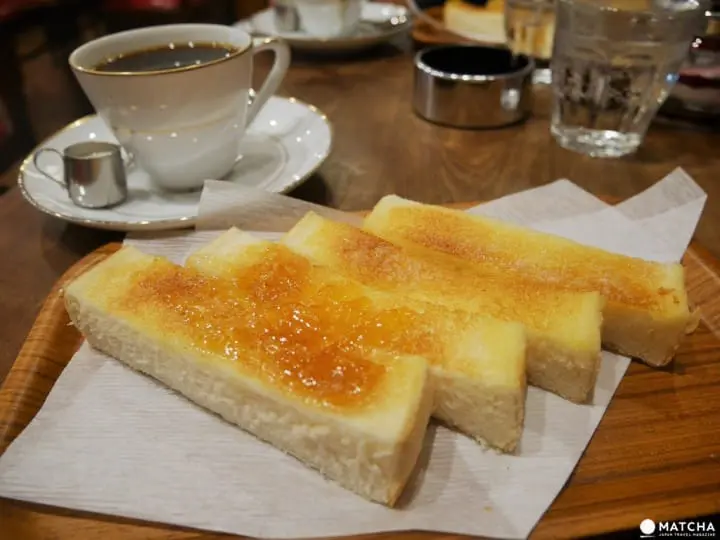
Only toast and cakes are available for food. We recommend the set that comes with blended coffee and handmade toast from the well-known shop Pelican Bread in Asakusa.
How about comfortably enjoying rich flavored coffee together with soft toast?
Chidoriya: Tenugui Seller
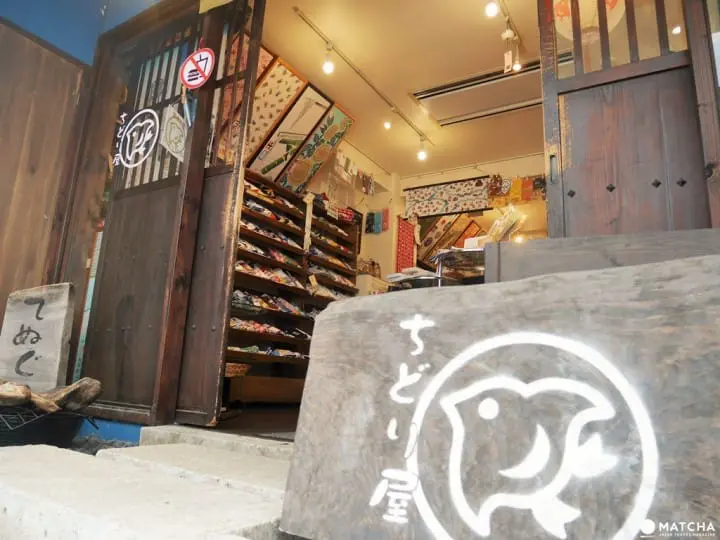
In comparison to the other shops that we have introduced thus far, Chidoriya Tenugui has only been opened for ten years. However, they sell tenugui (hand towels/wash cloths) which is a product that has a history dating back over 1000 years.
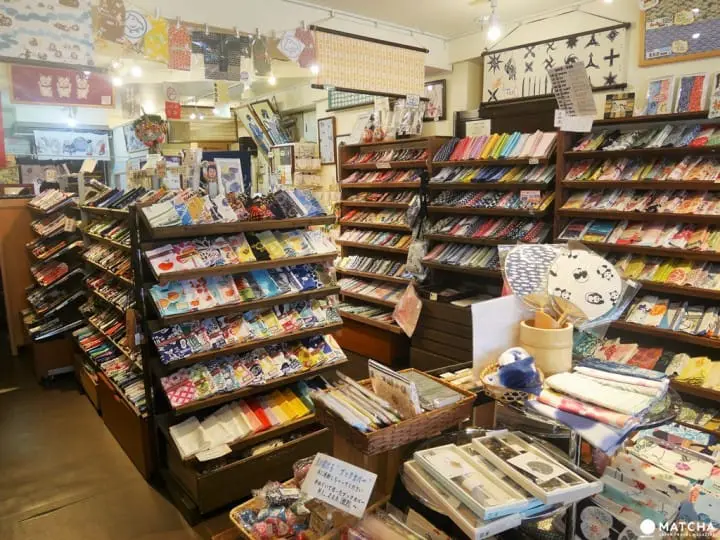
The inside of this small shop is lined with over 1500 types of tenugui. There are many tenugui with designs on both sides collected in the shop due to the manager’s fastidiousness.
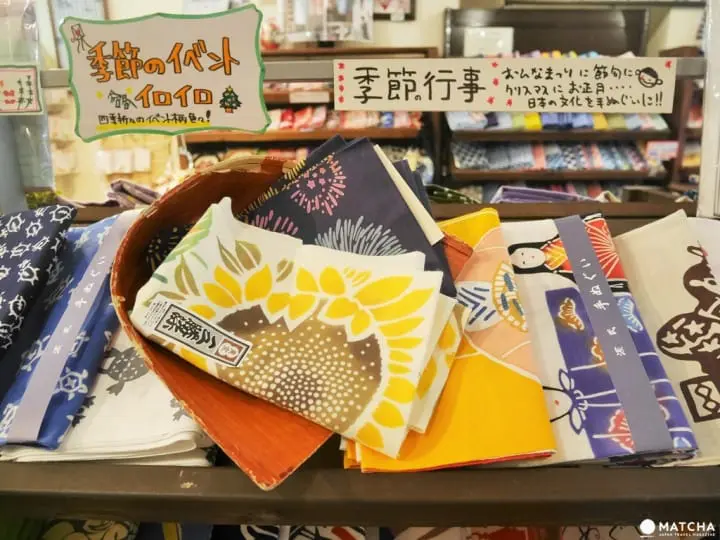
Small paper baskets are available inside, so feel free to use them to carry the tenugui you have chosen to the register. You can feel a retro-ness unique to Ningyocho even from this means of carrying your purchases.
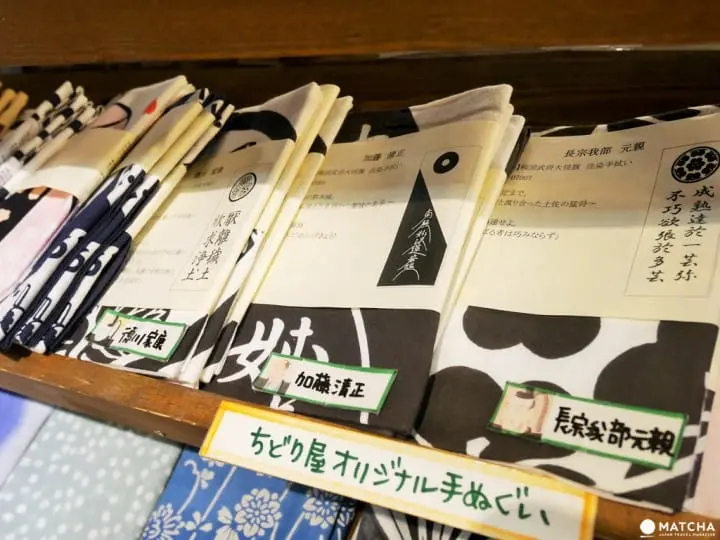
The shop also offers original products. The most interesting ones are tenugui from the Sengoku Commander series that mimic battle flags drawn with the family crests of Sengoku commanders. Those who love the Sengoku period should definitely check it out!
Products rotate quickly, so if you were unable to find the product that you wanted on the shelf, then check out this online shop (Japanese)! You can also make purchases from overseas.
Suitengu Shrine: Where Prayers For Safe Childbirth Are Answered

You should definitely visit Suitengu Shrine, the symbol of Ningyocho, as you’re visiting the well-known historical shops we have introduced in this article. This sacred ground is where prayers for safe childbirth are made.
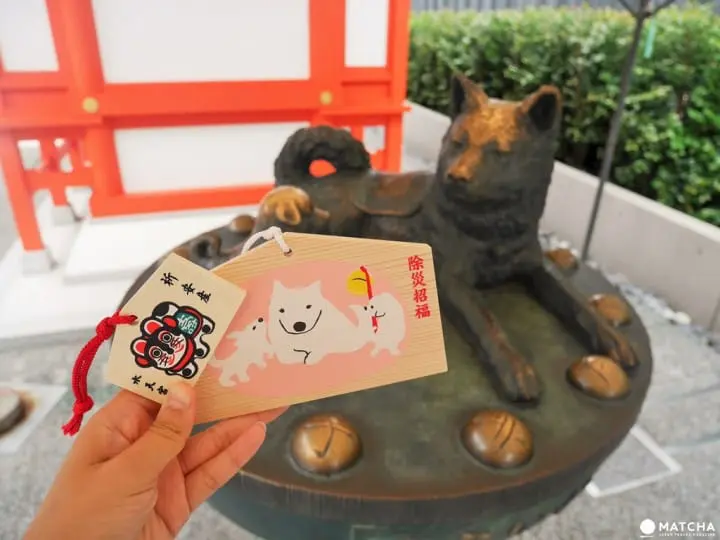
The ema of Suitengu are cutely designed after the bronze parent-and-child dog statues on shrine grounds. They can also be bought as souvenirs.
Extraordinary Access Immediately At T-CAT
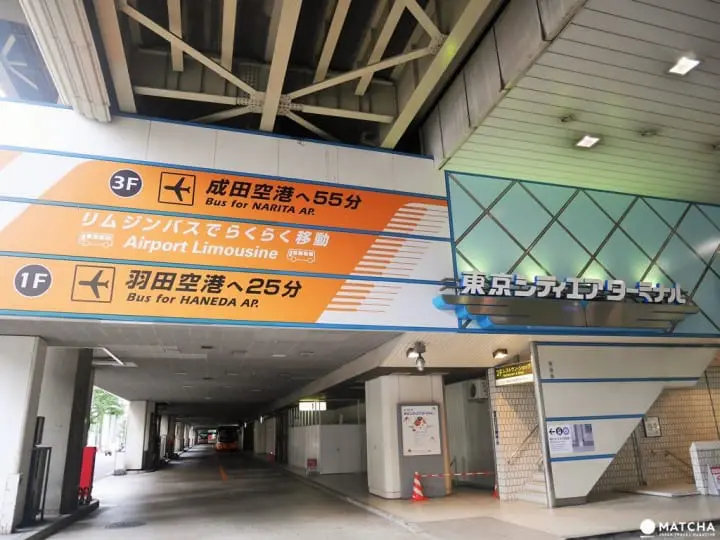
Have you become interested in Ningyocho after reading this article?
Access to Ningyocho is very convenient and there are subways that pass through Haneda Airport and Narita Airport from Ningyocho Station. A bus terminal called Tokyo City Air Terminal for traveling directly to and from the airport is also located immediately nearby Ningyocho.
Additionally, aside from hotels affiliated with the bus terminal, there are also many new hotels in the vicinity. We recommend the terminal as both a starting point in traveling to Ningyocho and also as a final destination when leaving Japan!
Town walk events are also being held at Ningyocho, so please check out this Facebook page!
More details on town walks here: https://www.facebook.com/groups/1410598215725493/ (Japanese)
You MAy Also Like
Sponsored by the Public Interest Incorporated Association Tokyo Junior Chamber Chuo District Committee
東京に出てきて8年目です。









































![[Coupon Available] Attention Overseas Winter Sports Fans! Nagano's Sports Depot Has Evolved](https://resources.matcha-jp.com/resize/720x2000/2026/01/05-254819.webp)
![[2 hours from Tokyo ] 10 Quiet and Breathtaking Views of Mount Fuji in Yamanashi Hokuto City , Yamanashi - Part 2](https://resources.matcha-jp.com/resize/720x2000/2025/12/16-253037.webp)

![[Reopening in March 2026] Ikoma Sanjo Amusement Park Park, 45 minutes from Osaka , with free admission](https://resources.matcha-jp.com/resize/720x2000/2024/08/28-194409.webp)